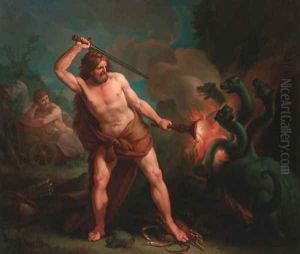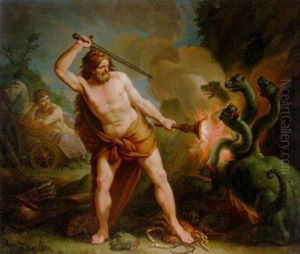Francesco Manno Paintings
Francesco Manno was an Italian painter and architect, born in Palermo in 1754 and died in the same city in 1831. Manno's artistic journey is deeply rooted in the cultural and artistic milieu of the late 18th and early 19th centuries, a period characterized by the transition from Baroque to Neoclassicism in Italian art. Manno, through his works, contributed significantly to this transformative era in Sicilian and Italian art history.
Educated in Palermo, Manno initially trained under local artists, where he honed his skills in painting and architecture. His early works are reflective of the Baroque tradition, yet as his career progressed, he increasingly adopted Neoclassical elements, indicative of the changing tastes and philosophical inclinations of his time. Manno's oeuvre includes religious and mythological themes, portraits, and architectural designs, showcasing his versatility and adeptness in various artistic mediums.
Manno's contributions were not limited to his paintings; he was also involved in significant architectural projects in Sicily, blending his artistic vision with practical architectural solutions. His ability to navigate between painting and architecture with ease highlights the interdisciplinary nature of his artistic endeavors. Despite facing the challenges of political and social upheavals of his times, including the effects of the Napoleonic Wars and the subsequent restoration period, Manno remained an influential figure in the Sicilian art scene, contributing to the cultural legacy of Palermo and beyond.
Throughout his life, Manno was recognized for his artistic talents and received commissions from notable patrons, including the church and the aristocracy. His works can still be seen in various churches and public buildings in Sicily, serving as a testament to his enduring legacy. Francesco Manno's death in 1831 marked the end of an era for Sicilian art, but his contributions continue to be celebrated, offering insights into the transitional period of Italian art from Baroque to Neoclassicism.

